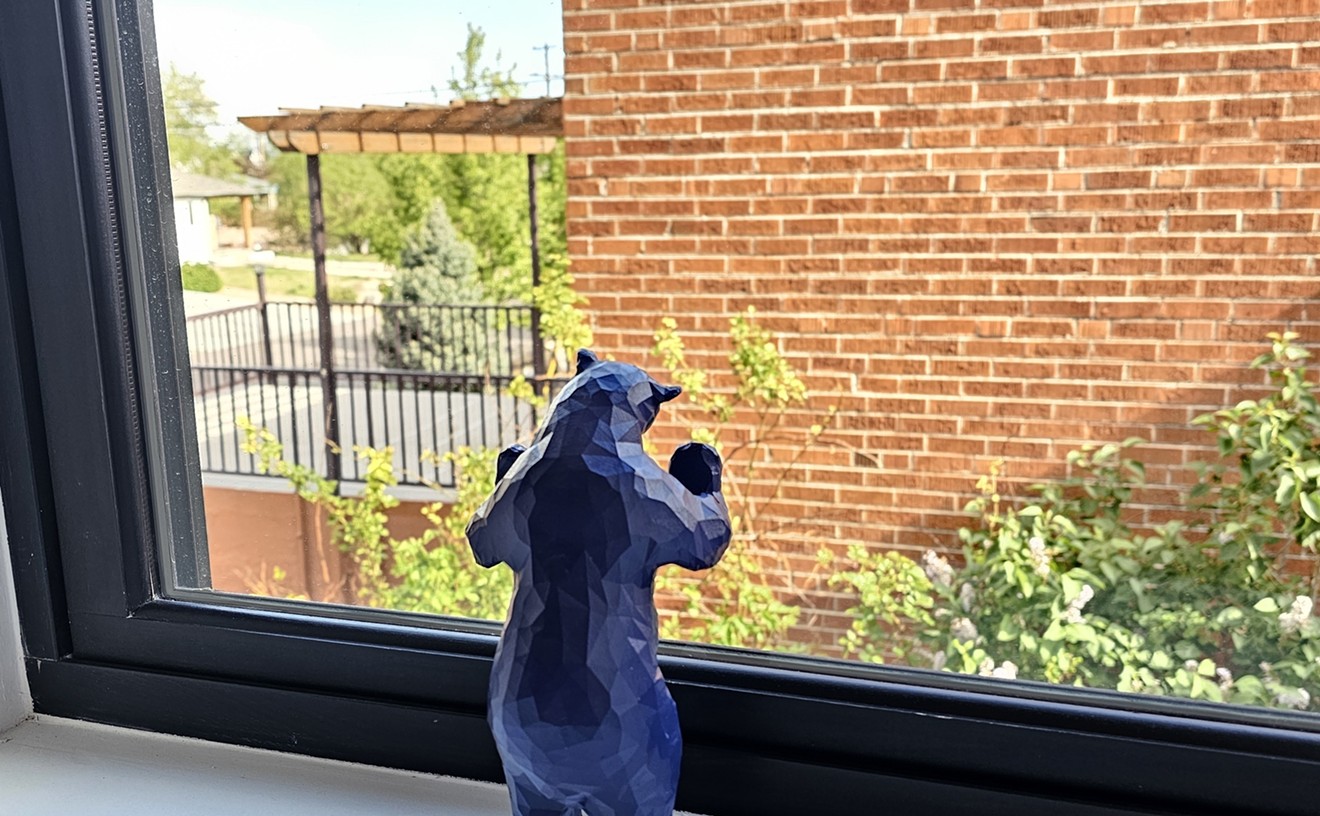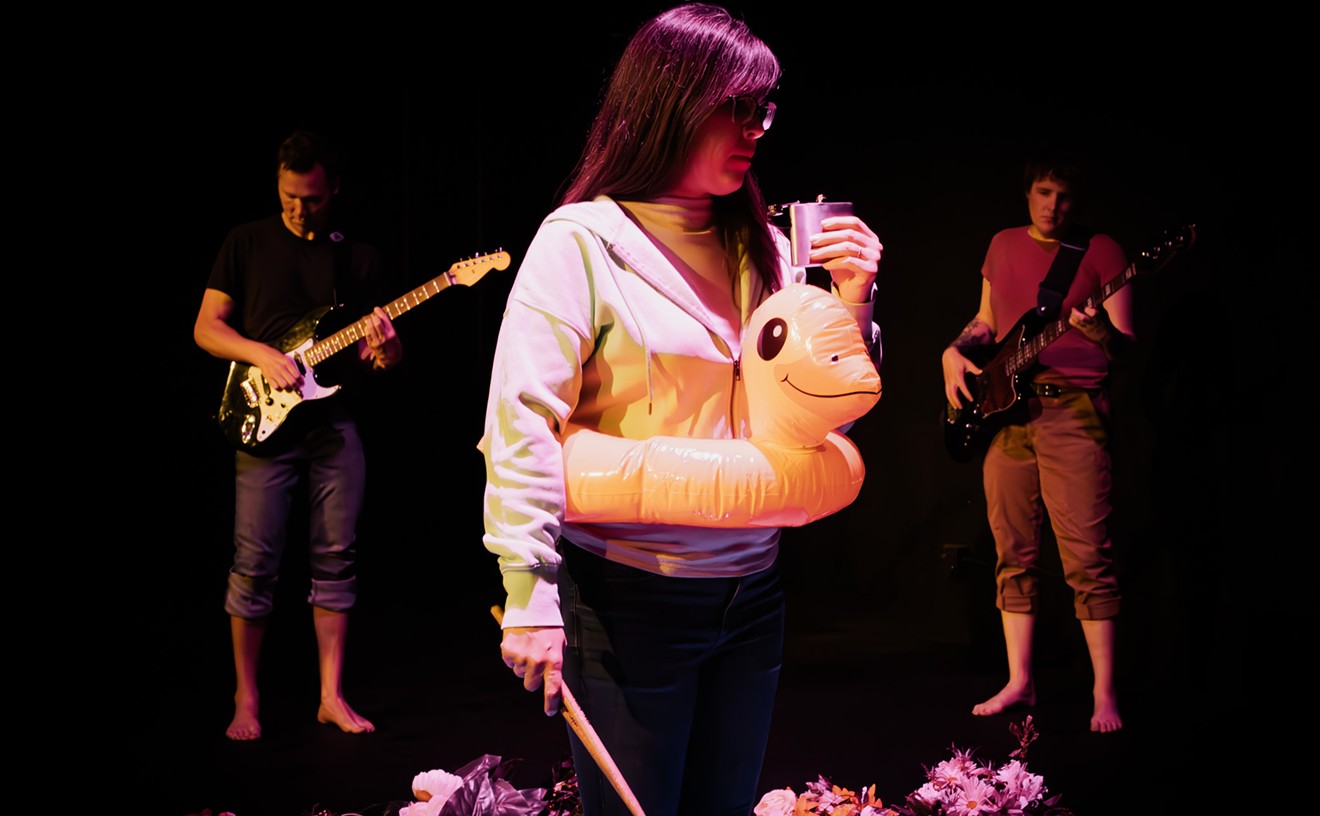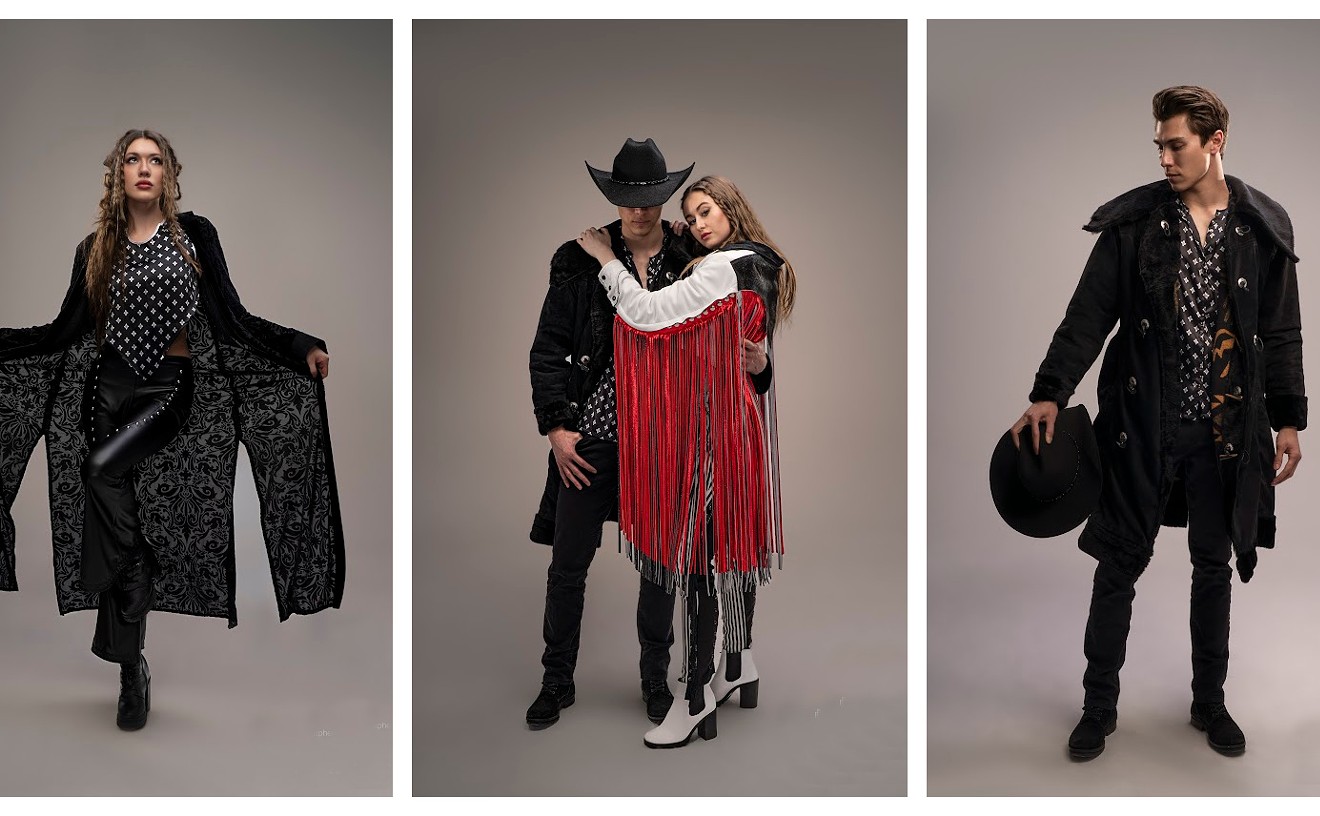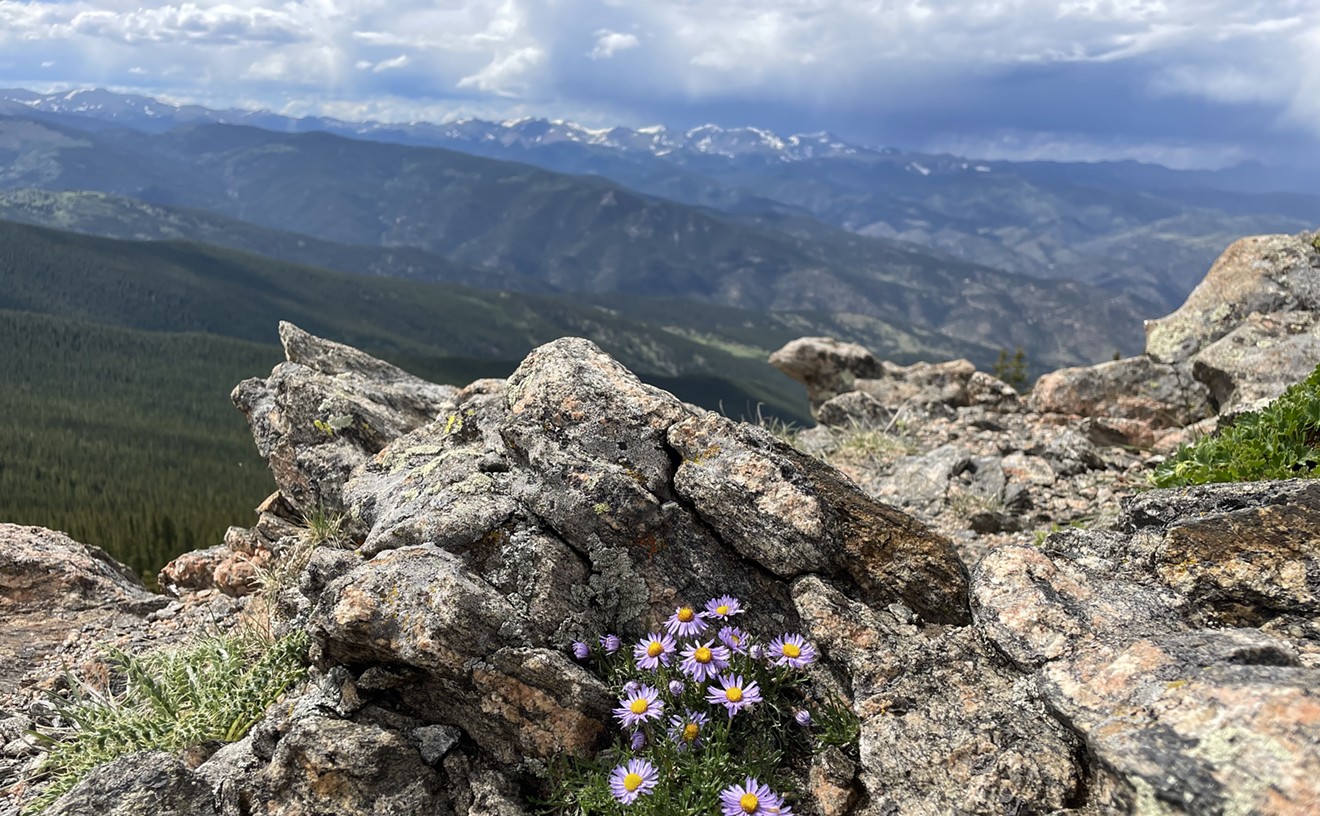The ensuing outcry led to far-reaching changes in the way the collection is handled by the university. The current show in the CU Art Galleries, Truth, Beauty...and Opinion?, provides the community with a lively reintroduction to the unwieldy collection, which has been in hiding since shortly after the scandal struck. The show also makes sense as a starting-off point for Susan Krane, the latest director of the CU Art Galleries. Finally, it gives Krane--along with the rest of us--an opportunity to review just what the university has and what it lacks. What it has are scores of fine prints. What it lacks is nearly anything by Colorado artists.
Before the newspaper expose, "the collection was out and about," says Krane, and the situation encouraged abuse. Pieces were displayed in offices, lobbies and hallways on campus, where they were exposed to damaging light and were sitting ducks for would-be thieves. A crude cataloguing system compounded the problem, as did the ubiquitous use of dangerously acidic papers as mats and floats.
Fortunately, funding secured as a result of the scandal helped former collection manager Susan Foster put the pieces together again. Works were freed from their acid mounts and stored in a vault specially constructed with light and climate controls. More recently, an anonymous donor provided for the creation of a proper catalogue for the collection, whose peculiar history helps explain how it got into trouble in the first place.
The CU collection was begun in 1939 by art-history professor Alden Megrew, who started buying works on paper to use as teaching tools. "The idea was to teach students how to look at real works of art instead of only being exposed to reproductions in books," says Krane. Megrew, who taught at CU for nearly forty years until he retired in the 1970s, not only launched the collection, but guided its formation as well. So did professor emeritus John Hoag, and Krane says that in recent years, other CU art and art-history faculty, including Alex Sweetman, Betty Woodman and Ron Bernier, "pushed the collection in certain ways."
The involvement of so many people, coupled with Megrew's original goal of collecting teaching tools, has meant that though the collection has great range, it has little depth. There are some stylistic holes that a truck could be driven through, such as a decided lack of abstraction. On the other hand, the collection has a surfeit of pop art--so much so that Krane has essentially skipped over the style for now and is planning a separate pop show next year.
The university clearly does not yet have a handle on where much of the collection came from. For instance, when asked for details about Anna C. Hoyt, an important benefactor responsible for many of the old-master prints included in the current show, Krane can say only that "we're just now at the stage where we're starting to gather that kind of information."
Krane spent months examining and exploring the collection--a process she describes as "like a treasure hunt"--and found several gems such as a rare and much-sought-after David Smith ink drawing. Because of the wide diversity of the works she found, Krane decided that the easiest way to organize the virtually unorganizable material into a coherent show was to sort things into four thematic categories--"Portraits and Portrayals," "Satire and Social Commentary," "Our Place in Nature" and "Picturing the Body."
The exhibit begins with "Portraits and Portrayals," which in this case means pictures of people. The choices Krane made reflect the collection's chief strength: its many memorable prints. CU has a nice group of old masters, some choice modern masters, real depth in 1930s and 1940s regionalism, and lots of figurative stuff from the last twenty years.
Krane may have removed objects from their historical context, but she took pains to group like items together. One of the oldest pieces in the show, a print of Albrecht DYrer's breathtakingly detailed 1511 woodcut "Last Judgment," is shown alongside other European prints that are from entirely different countries--and centuries--but that reflect the same traditional sensibilities.
"Portraits and Portrayals" includes two Picassos. Next to the splendid 1933 etching "The Sculptor's Studio," from the legendary "Vollard Suite," is the gorgeous 1954 lithograph, "A Troupe of Actors." Other standouts in the first section include Werner Drewes's primitive 1931 woodcut of an African-American woman, and a similar, though more lyrical, view of a seated woman in "Mujer Sentada," a 1945 lithograph by Mexican artist Alfredo Zalce.
Among the many contemporary pieces in this section are an Andy Warhol silkscreen, a silkscreen by Alex Katz, a pair of Robert Longo lithographs, and one of those oddball Philip Guston lithographs. The Guston, 1980's "Curtain," might be equally at home in the next section, "Satire and Social Commentary." Then again, this weird view of heads in a landscape might fit into any number of categories.
"Satire and Social Commentary" is laid out in the same instinctive way as "Portraits and Portrayals," with similar works gathered into small, concentrated displays. The title for this section might have been suggested by caricaturist William Hogarth's 1754 etching "Satire on False Per-spective." Here Hogarth pokes fun at the shaky handle many English artists of his time had on the Italian import of perspective.
It's easy to get lost in this large show, so Krane's insightful groupings are helpful. One pairing sets a scene of men working as blacksmiths (James McNeill Whistler's 1866 dry-point "The Forge") above a confident scene of men on strike (Kaethe Kollwitz's "March of Weavers," an 1897 etching). Whistler's men have been posed casually, while Kollwitz's figures have been imbued with the urgency of historic events. Another inspired comparison involves a pair of Francisco Goya prints. "Los Caprichos," from 1799, reflects Goya's joie de vivre; the other, "Los Desastres de la Guerra," published posthumously in 1867, reflects only despair.
"Our Place in Nature" has more paintings than each of the three other sections. Some are predictable, like the idyllic scene of woods shown in Henry Varnum Poor's undated oil on canvas "Trees and Snow" (apparently a product of the 1930s). But Krane has included a few surprises, like Marsden Hartley's 1939-40 "Log Jam," a rare find that is assuredly one of the most important pieces in the collection.
Like the other sections, "Our Place in Nature" is dominated by prints and includes examples of art made over a huge span of time. Just a few feet away from Giovanni Piranesi's "View...of the House of Nero," an intaglio from 1759, is "Summer Benediction," a 1950 lithograph by Charles Burchfield that in turn is only a step or two away from Louisa Chase's 1982 color woodblock "Cloudburst." Each is stylistically distinct, yet they somehow work together.
The show's last section, "Picturing the Body," is also its most cogent. Here Krane has attempted to reveal how art has historically defined people's roles in society. The depiction of women as objects takes up one part of this section, women as victims another. But Krane is not overly polemical in her presentation, and she allows the beauty of what some modern feminists would consider politically incorrect art to shine through. That's surely the case with Marvin Martin's two ceramic sculptures of dancers from the 1930s, both of which wound up at CU as the result of a Works Progress Administration purchase when they were new. Martin is wrongly forgotten today, but in the '30s, he was the best sculptor in Colorado.
Romanticized views of women, some of them nude, may be expected in a collection of this size, especially in the historical pieces. But CU has quietly assembled more than its share of male nudes as well. Most of these are fairly demure, such as the engraving "Apollo Belvedere," by the sixteenth-century Dutch artist Hendrick Goltzius. But others are less genteel, like the grid of color photographs of penises seen in Phil Bergerson's "Series of Men's Genitals," from 1986. Krane notes that it was "quite a surprise" to find so many male nudes in the collection.
One piece in this final section is worth the drive to Boulder all by itself: Diego Rivera's 1934 watercolor "Figure on Knees." This beautiful painting, which was recently restored after years of neglect, captures a robust nude woman (earth mother?) crawling on her knees.
The CU collection's near total lack of works by Colorado artists can be an irritant if one thinks much about it--after all, shouldn't the state's largest university have made at least a token effort to document the state's own art history? But that's not Krane's fault, and she's done a valiant job of sifting through the more than 3,000 pieces she had to work with. Her mix-and-match approach, organized around vague themes, is at times confusing. But Krane says she hopes Truth, Beauty...and Opinion? will lay the groundwork for more focused future shows.
"And anyway, I think I like themic shows better, because they encourage people to look and compare," says the gallery director. "I'd rather work with themes than always pigeonhole things into 'isms.'" Given the scattered character of the CU collection, there's little danger of that happening anytime soon.
Truth, Beauty...and Opinion?, through March 25 in the CU Art Galleries, on the Boulder campus in the Sibell Wolle Fine Arts Building, 492-8399.










